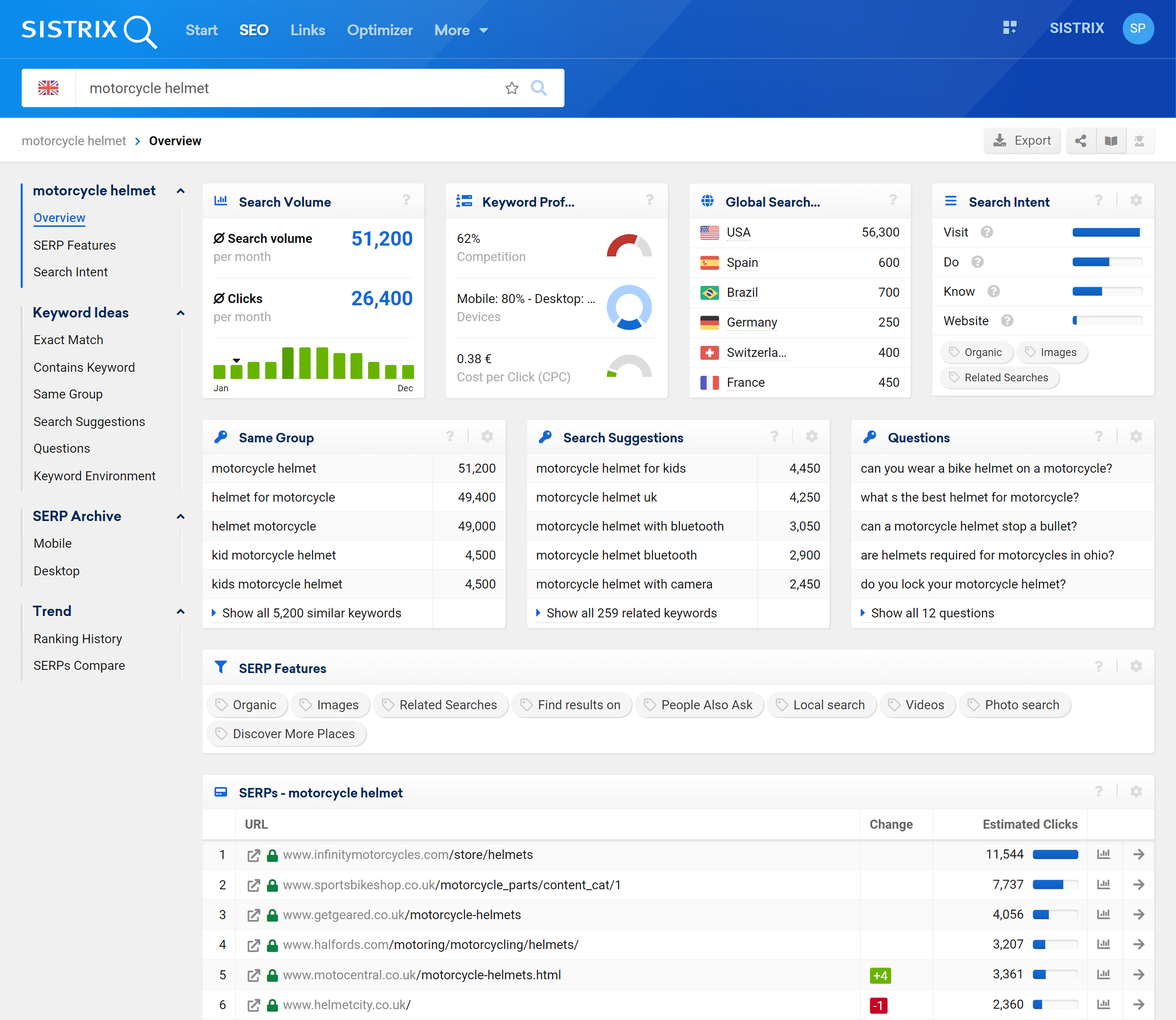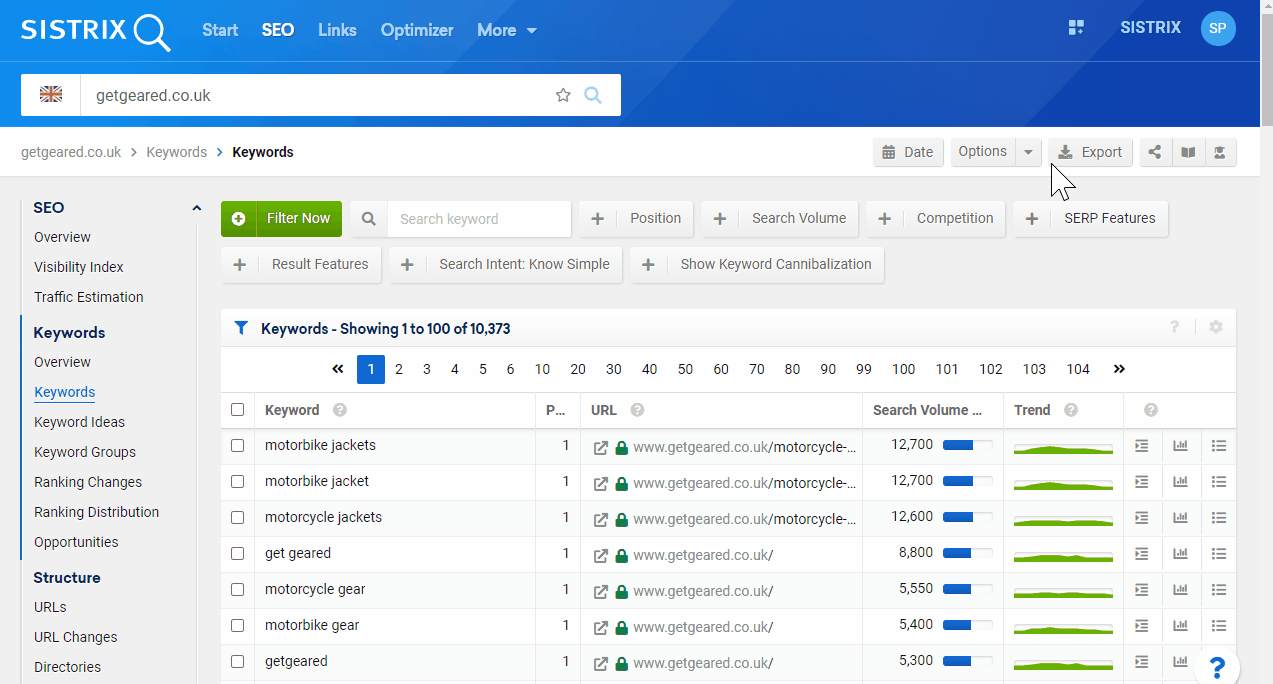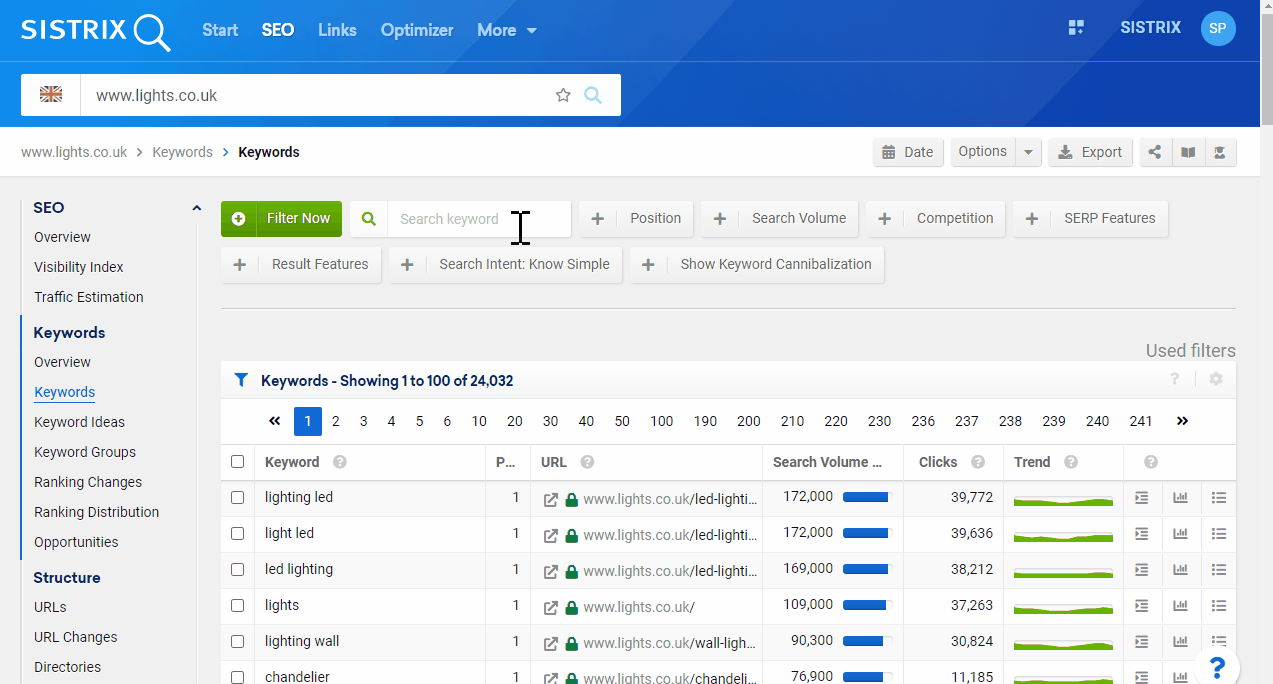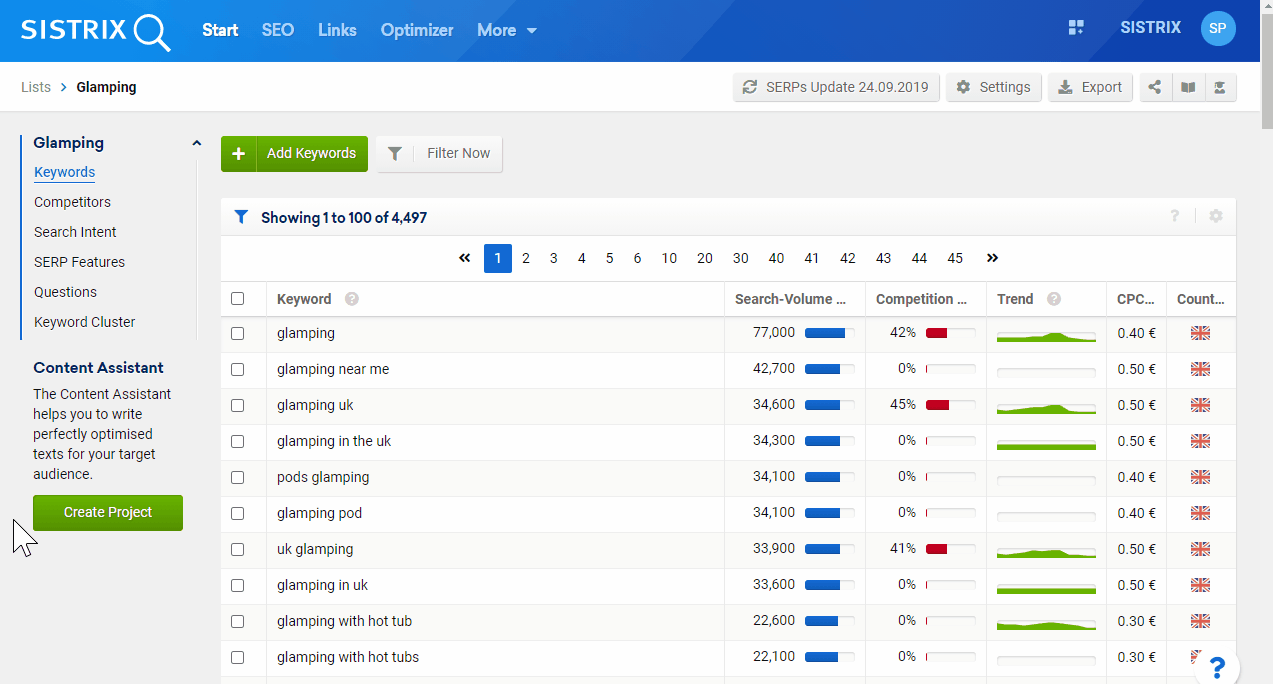Despite all the developments in SEO, the keyword remains the central starting point of every search. We have massively improved both data and features around keywords in the past few weeks.
Google has no interest in transparency for keyword and traffic data. On the contrary: the fewer advertisers understand which ad euros lead to the desired success, the higher the average CPC.
Tools like the Google Keyword Planner and third-party applications based on it can only ever be as good as Google deems it necessary, and we have been able to clearly see in recent years that this assessment continues to decline with every quarter of required stock market growth.
As a result, we have invested a lot of time and capital in the last few months in order to be able to offer our users the best possible keyword and traffic data. A statistical data model developed in-house provides SISTRIX users with the best data basis for well-grounded decisions.
Based on the new data, we have updated the search volume values for many tens of millions of keywords and add millions of completely new keywords to our databases.
The results can already in the SISTRIX Toolbox as our data analysis process comes to a conclusion. (Some data is still being processed.) This changelog entry gives you an overview of the new data and features.
Keyword Overview
Immediately after entering a keyword in the SISTRIX search function, you will see the newly designed keyword overview:

In addition to the existing features such as the search intention analysis for this keyword, the new features are highlighted in the screenshot above with orange dots:
- Search volume: We show the search volume of the keyword as an average value over the whole year. So all monthly values are averaged. We are not showing ranges or groups here, but numbers that are as exact as possible.
- Clicks: The search volume alone is no longer meaningful. Depending on the search intention and thus the SERP layout, a very different proportion of searchers clicks on organic hits. We take this into account here and analyse how many organic clicks occur on average per month.
- Device distribution: Even if more than half of all searches now take place on the mobile phone, the specific search behavior is very different depending on the keyword. Here you can find out how device usage is divided for this specific keyword.
- Clicks by position: In the representation of the SERPs, we show how the organic clicks for this keyword are distributed over the top 10. You can find out, before you optimise for a specific keyword, whether only place 1 counts or whether there are still clicks left for place 7.
Keywords ranking in domains
We are now also showing the revised values for the search volume in all keyword lists for domains, both as a number and, as before, a blue bar so that differences can be quickly recognized quickly. But there is more:

You can now activate a new column in the table options: Clicks.
In it, we show the calculated number of organic monthly clicks that this domain receives for this keyword on the measured ranking position.
If you sort the whole table according to this column, as in the GIF above, you can see at a glance the domain’s ranking keywords domain that bring you the most visitors.
Lists in SISTRIX
There are also innovations relating to the list function in SISTRIX. You’ll now see a small checkbox at the beginning of each keyword table. If you select a keyword (or all keywords in the table) there, you can transfer them to a list with one click.
The system suggests the name of the new list. In a matter of seconds, you will receive extensive keyword lists with precisely tailored search terms.

But there are also innovations in the lists themselves: in addition to the integration of the new values for the search volume, there is a new feature to automatically determine keyword clusters in a list:

This function automatically creates keyword clusters from extensive keyword lists using various methods. You can quickly distinguish these clusters by color and see helpful, summary metrics when you hover over them.
New API Endpoints
It goes without saying that all exports from SISTRIX already contain the new values. In order to be able to use this data in the best possible way via our API, we have created three new API endpoints:
- keyword.seo.traffic : returns the search volume of a queried keyword. (Documentation.)
- keyword.seo.serpfeatures : returns the SERP features found in the SERP for a keyword. (Documentation.)
- keyword.seo.searchintent : returns the search intent for a keyword. (Documentation.)
You can find out more about the API in our documentation. Note that you can also use it easily with Excel and Google Sheets.
All new functions and data are already completely online and available in SISTRIX.